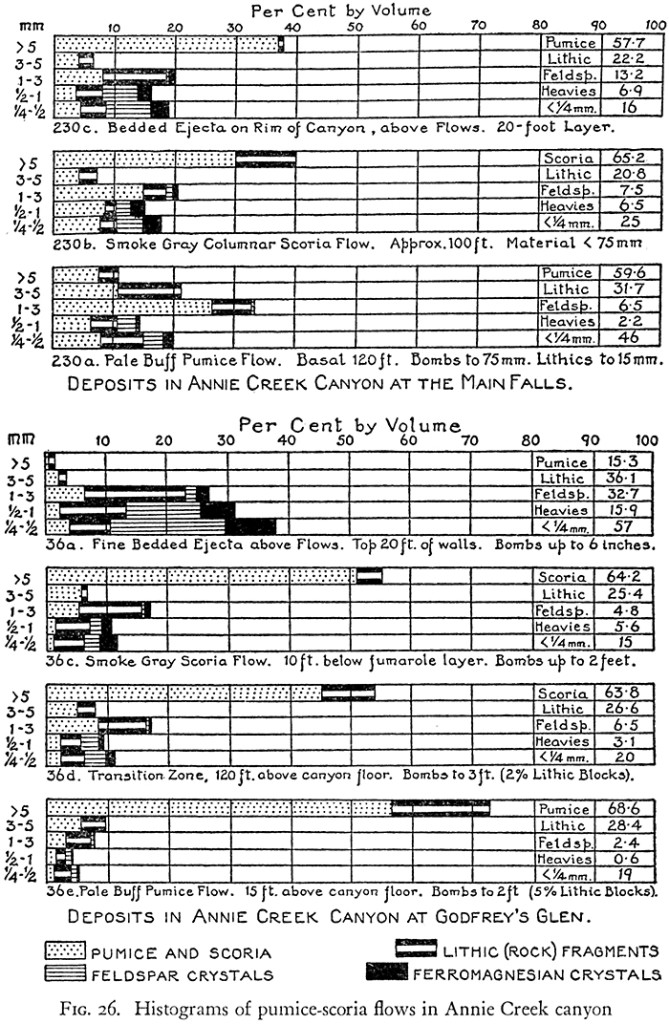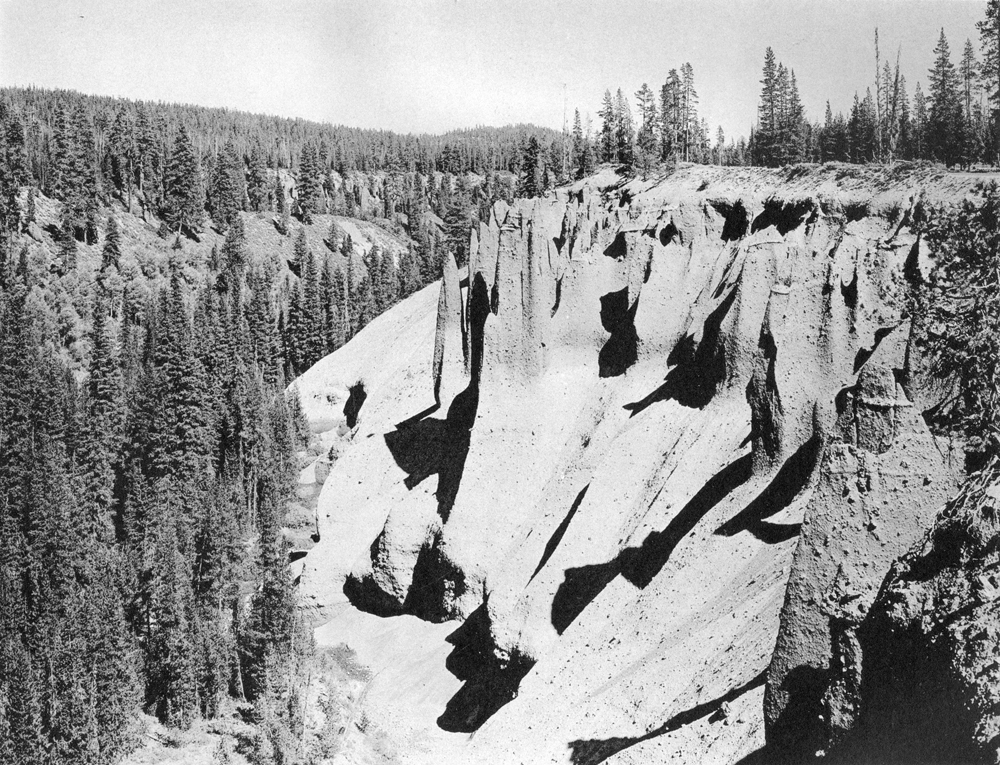|
Plate 16. The Pinnacles, Sand Creek canyon, showing pale pumice flow beneath smoke-gray scoria flow, above which lie 10 feet of fine ash. Near the contact of the ash and scoria layers is the red zone caused by oxidation of iron-bearing fumarole gases. The pinnacles result from erosion controlled partly by vertical joints and partly by local compaction of scoria by hot gases. (Photograph by George Grant, National Park Service.) |
The basic scoria flows did not spread so far as the earlier pumice flows; many of them extended no farther than the limits of the park. Where they followed the canyons they were restricted to the central parts, as if they poured down median depressions in the pumice deposits and to some extent carved their own channels. On the north and northeast sides of the volcano they spread more widely, covering much of the so-called Pumice Desert and flooding the wide valley of Desert Creek. Some of the basic ejecta even traveled as far as the eastern foot of Mount Mazama and well out toward the Klamath Marsh.



